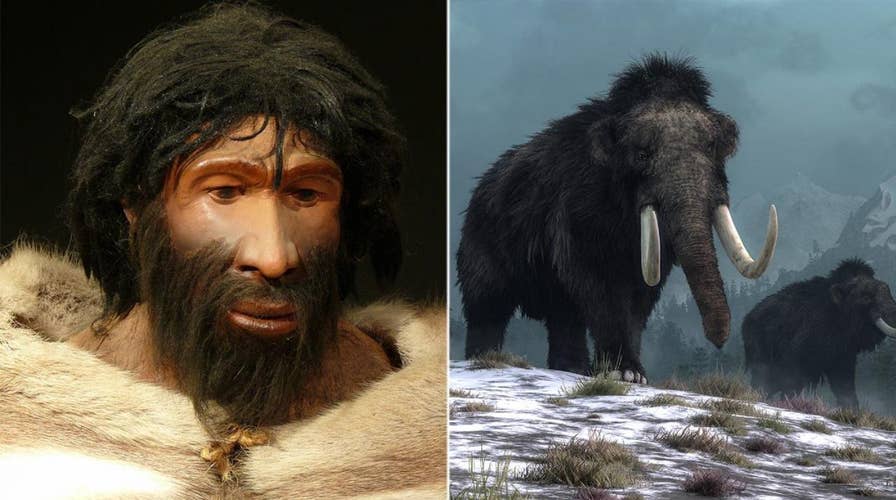A new study suggests that woolly mammoths and Neanderthals may have shared genetic traits
A new study suggests that woolly mammoths and mankind's ancestors, the Neanderthals, may have shared genetic traits.
Archeologists have discovered bones belonging to some 60 mammoths to the north of Mexico City, according to reports.
The site expands on an already exciting trove of a dozen skeletons and human traps discovered in the same shallow lake basin in October 2019. The National Institute of Anthropology and History is as overwhelmed by the discovery as they are excited by it.
The excavations will likely continue until the airport project is completed in 2022.
WOOLLY MAMMOTHS HAD A HORRIBLE AND MISERABLE END, STUDY SAYS
“There are too many, there are hundreds,” said archeologist Pedro Sánchez Nava.
The area, once a lake known as Xaltocan, appears to have been a wealth of food for the mammoths, who often ate 330 pounds every day.

In this undated photo released on May 21, 2020 by Mexico's National Institute of Anthropology and History (INAH), an archaeologist works at the site where bones of about 60 mammoths were discovered at the old Santa Lucia military airbase just north of Mexico City. Institute archaeologist Pedro Sánchez Nava said the giant herbivores had probably just got stuck in the mud of an ancient lake, once known as Xaltocan and now disappeared. (INAH via AP)
Most of the newly-discovered mammoths likely died after being trapped by mud in the ancient lake or hunted by other animals. While the October 2019 discovery included two human-made pits that were likely used to trap mammoths – and other animals – Nava speculates that humans could have used the natural mud pools around the lake shore as traps as well.
“It’s possible they may have chased them into the mud,” he noted, adding, “They (ancient humans) had a very structured and organized division of labor” for getting mammoth meat.
WOOLLY MAMMOTH CELLS BROUGHT BACK TO LIFE IN SCHOCKING SCIENTIFIC ACHIEVEMENT
The huge number of mammoths being discovered may also change scientists’ views of how frequently mammoth turned up on the dinner menu of our ancestors.
“They used to think it was very chance, sporadic,” Sánchez Nava said of a mammoth meal. “In fact, it may have been part of their daily diet.”
The great number of mammoths gives scientists a rare chance to study possible causes of the decline of mammoths, which occurred around 10,000 years ago. Human hunting and genetic inbreeding are believed to be the main causes of extinction.
CLICK HERE FOR THE FOX NEWS APP
Sánchez Nava said nothing had been found that would require halting work on the airport project, in which an old military base is being converted into a civilian terminal.
The Associated Press contributed to this report.

